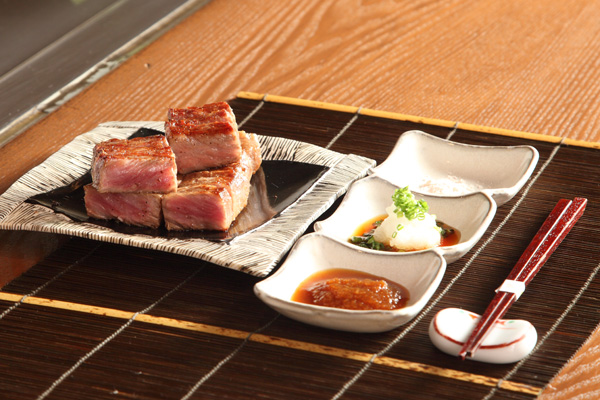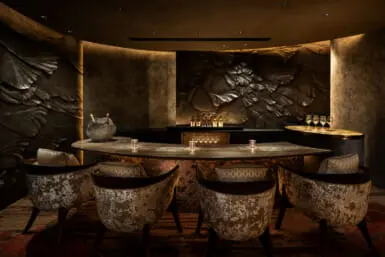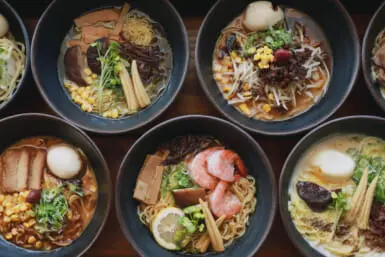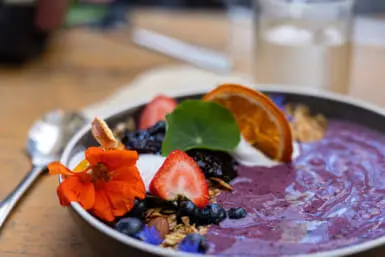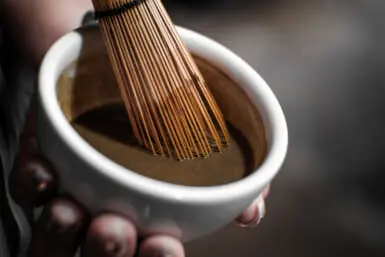Seen as the Rolls-Royce of beef, Ohmi-gyu is known throughout Japan for its unique, marbled appearance and its incredible taste. It is believed to be the official wagyu of the Imperial Family and along with Kobe and Matsuzaka, is known as one of the so-called ‘three supreme beefs of Japan’ (Sandai Wagyu). It is both extremely prestigious and expensive and is revered by connoisseurs around the world, but what is all the fuss is about?
Pampered Cows?
We visited Okaki Honten in Yamanoue, Ryuo-cho in Shiga Prefecture, the home of Ohmi-gyu, to find out a little more. Of course, we were to get our teeth around some juicy steaks, but first there was a chance to see where they came from: the Tajima Black Wagyu at the cattle farm just down the road. Hailing from the Northern region of Hyogo Prefecture, these sable beasts are considered a national treasure and are the source of what is considered by many as the world’s finest meat.
It is the unusually high level of marbling – the fine layers of intramuscular fat – running through their meat that sets them apart from regular cattle. This is what gives ohmi-gyu its juiciness, rich flavour and extraordinary tenderness.
Farmers go to great lengths to enhance this genetic quirk by making sure their cows are properly taken care of. Though their husbandry is surrounded by a certain amount of mystery and intrigue, the cows are generally thought of as the most ‘pampered’ on the planet.
Stories about them drinking alcohol while being played Mozart have become legendary, but are they really treated as we are led to believe?
“Foreigners seem to have an image of us giving them beer and massaging them, but I think that may be a little exaggerated,” says Takeki Okayama, President of Okaki Co.ltd.
“Of course we sometimes put dried beer yeast in their forage, but as for real beer, I would rather drink it myself! Still, fermented forage has a good smell and it is indeed very appetising.” For the cows, we’d presume…
“As for massages,” Okayama says, “I am not sure about that either, but in order to make sure they are comfortable we try to provide a stress-free barn. For example, we are constantly changing their flooring and we use an electric fan to ensure it never gets wet. Basically we want them to sit there and feel as relaxed as possible.”
Whatever they are doing it seems to be working; the beef at Okaki Honten lives up to its hype. It is served in a variety of ways, including shabu-shabu, yakiniku, steak and sukiyaki, which Mr. Okayama says originated in Shiga. We opted for the steak set, which was a true feast consisting of a number of small beefy dishes followed by the highest quality miyabi steak that really does have the melt in the mouth quality that everyone talks about.
Health Benefits?
Ohmi-gyu is also said to boast a number of health benefits. As well as being a source of vitamin B and protein, the high percentage of mono-unsaturated fat that wagyu cows produce can, it is thought, help to reduce the cholesterol levels in our arteries. The mono-unsaturated fat to saturated fat ratio, we’re told, is up to three times higher (6:1) in wagyu than in regular beef (2:1).
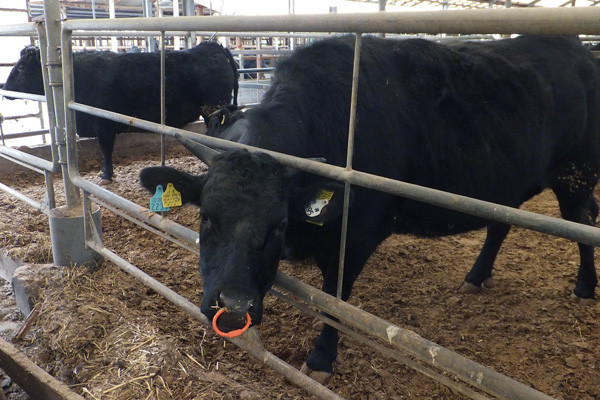
“Actually, I think I’d prefer a glass of red with my hay today…” A Tajima Black Wagyu at the farm not far from Okaki Honten, where we tasted her friends.
It was reportedly the medicinal properties of Ohmi-gyu that drew the Shogun and many Feudal lords to the beef during the Edo Period, though one suspects its flavour and succulence may also have had something to do with it. The fact that beef was prohibited at the time didn’t seem to deter the most powerful people in the country from eating it.
“People in Japan generally started to eat beef from 1868, during the Meiji era,” says Okayama. “But the history of beef in the Ohmi area (now Shiga Prefecture) goes back much further. We were dealing cattle leather for drums during the Edo Era, the left over meat was put in miso in order to preserve it. This precious food was then offered to the Tokugawa Shogunate.”
Centuries on, it is still highly valued, however these days it is not just served to the country’s elite. There are a number of restaurants throughout Japan serving Ohmi-gyu, though for something more authentic, if you are anywhere near Shiga a visit to Okaki Honten is well worth the effort.
by Matthew Hernon
Image courtesy of Okaki Honten.

